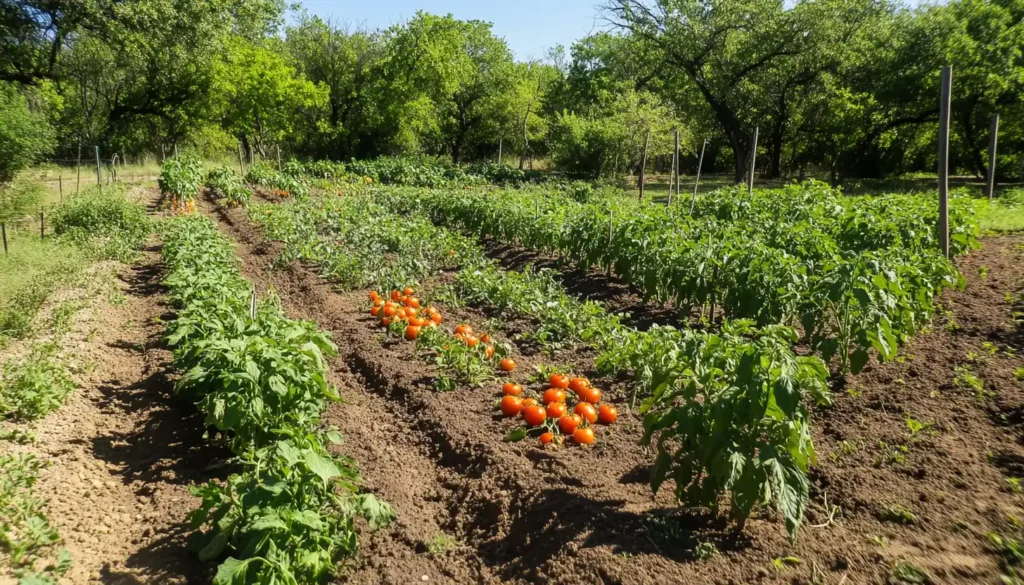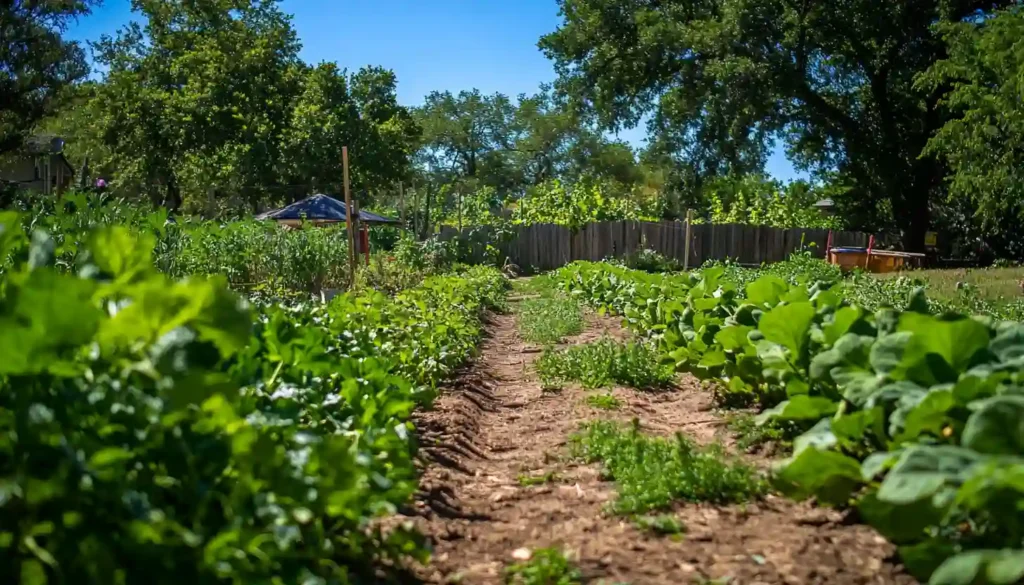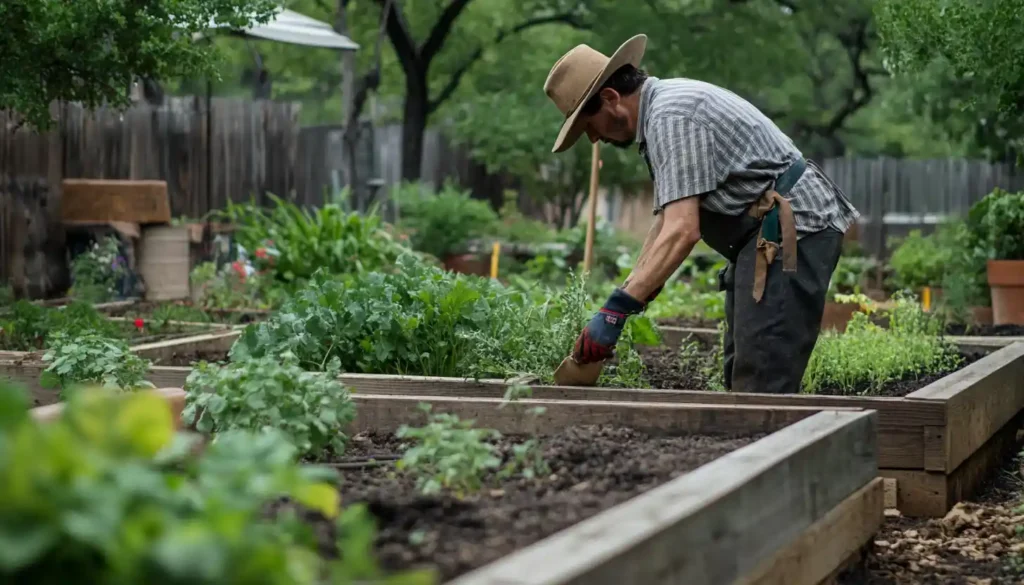Gardening in Texas blends the artistry and science of cultivation . Whether you’re an experienced gardener or just starting with a small plot, one question looms large : What month should you start a garden in Texas? The reply may not be as apparent as it seems. Texas is a state of vast and varied climates, and the timing for planting can differ depending on where you live. But don’t worry, we’ve got you covered!

Understanding Texas’ Climate Zones
Texas is big—really big—and its climate reflects that. From the chilly winters of the Panhandle to the sweltering summers of South Texas, the state is divided into several USDA hardiness zones, ranging from 7a to 10a. This range dramatically affects when you should plant your garden. One important thing to note is that _frost dates_ in Texas vary by region. Knowing the typical date of the final frost is crucial for choosing the ideal planting time.

- North Texas (Zone 7a-8b): Late frosts can sneak up in early spring.
- Central Texas (Zone 8a-9a): Mild winters but scorching summers.
- South Texas (Zone 9a-10a): A subtropical climate that allows for nearly year-round gardening.
Personally, living in Central Texas has taught me that it’s all about timing. Planting too soon can lead to a late frost destroying your young plants. If you plant too late, the brutal summer heat can fry your crops. Timing is everything here!
Best Gardening Months for Different Texas Regions
a) North Texas
For North Texas gardeners, late frosts can be a major headache. The best time to start your garden here is typically after the last frost, which is usually in late March to early April. If you’re planting cool-season crops like broccoli or lettuce, you can get started a bit earlier, around mid-February. Warm-season crops, including tomatoes, peppers, and squash, should be planted in April.
b) Central Texas
In Central Texas, spring gardens can be planted as early as mid-March, once the danger of frost has passed. Fall gardening can start as early as September for crops like kale and spinach. Pro tip: For those scorching summer months, choose heat-tolerant plants like _okra_ and _sweet potatoes_.
For more detailed advice on when to plant, I always recommend checking out this spring planting guide for Texas. It’s a fantastic resource!

South Texas
South Texas is a gardener’s paradise, with nearly year-round growing opportunities. Most gardens can be started as early as February. Fall gardens can often be planted as late as October or November due to the warmer climate.
For even more insights, you might want to look at Texas vegetable gardening guide, which offers great advice on making the most of your Texas garden.
Gardening Seasons in Texas: A Month-by-Month Breakdown
a) Spring (March-May)
Spring is when Texas gardens truly come to life. After the last frost, you can start planting:
- Tomatoes
- Squash
- Peppers
- Cucumbers
If you’re anything like me, watching the first tomato seedlings sprout feels like pure magic. I remember one spring when I planted way too many tomatoes, and by summer, my neighbors were mysteriously avoiding me because I kept trying to give away bags of tomatoes. Lesson learned!
b) Summer (June-August)

Texas summers are intense, but you can still grow heat-loving crops like:
- Okra
- Sweet potatoes
- Melons
Ensure you water consistently—I’ve discovered through tough experiences the consequences of neglecting this! In Central Texas, I recommend setting up an irrigation system to keep everything alive in the summer.
c) Fall (September-November)
Fall is one of the best times to plant cool-season vegetables in Texas:
- Spinach
- Lettuce
- Carrots
- Broccoli
The cooler temperatures make it much easier to work in the garden, and you’ll have fewer issues with pests. Additionally, there’s a tranquil feeling that comes with fall planting—perhaps it’s the cool breeze or the view of colorful autumn foliage.
d) Winter (December-February)

Even during winter, Texas gardeners have things to do! It’s the perfect time to prep your soil for spring by adding compost or planting cover crops like _clover_ or _rye_.
Spring Planting Guide
Spring planting is key to a successful garden in Texas. You can start planting many crops in March, but for certain vegetables, starting seeds indoors in late January or February is ideal. Some of the best crops to plant in the spring include:

- Tomatoes: Initiate seed growth indoors in January or February, and move them outdoors following the last frost.
- Peppers: Similar to tomatoes, begin growing these inside since they require an extended season.
- Cucumbers and squash: Directly sow these in mid-March to early April.
One thing I recommend? Get some good quality transplants for tomatoes and peppers if you’re short on time or not confident in starting from seeds. It can really make a difference.
Fall Planting Guide
Fall is a second chance for many Texas gardeners. Crops like leafy greens, broccoli, and carrots thrive in cooler temperatures. I’ve had some of my best harvests in the fall when the pressure of summer heat was off, and I could spend more time nurturing my plants without sweating buckets.

Here’s a simple guide:
- Leafy greens: Plant these in late August to early September.
- Root vegetables: Think carrots, beets, and radishes—plant these in September.
- Broccoli and cauliflower: Initiate seed growth indoors in August and transplant outdoors during September.
Vegetable Gardening by Region
a) North Texas
In North Texas, the best planting times vary greatly depending on your specific microclimate. As a general guideline, it’s advisable to delay planting most crops until late March. Spring gardening here can be a bit tricky with unpredictable frosts, but fall planting in September is generally more forgiving.
b) Central Texas
I live in Central Texas, where I’ve learned that March is the magical month for spring planting. Start too early, and you risk frost; start too late, and you’ll be battling the heat. Fall planting is best in September.
c) South Texas
Gardeners in South Texas have it made! The warm climate allows for earlier spring planting (February) and later fall planting (October-November). With strategic timing, you might succeed in growing a second cycle of warm-season crops.
Common Mistakes in Texas Gardening

Ah, the mistakes we make in gardening! Don’t worry, I’ve made plenty of them, and I’m here to help you avoid a few:
- Planting too early: A late frost can kill your seedlings. Always wait until you’re certain the last frost has passed.
- Overwatering: With Texas’ dry summers, it’s tempting to overwater, but this can lead to root rot.
- gnoring pests: Texas has its fair share of pests like aphids and caterpillars. Be vigilant!
Seasonal Garden Maintenance in Texas

Gardening in Texas isn’t a “plant it and forget it” situation. Seasonal maintenance is crucial:
- Spring: Water regularly and mulch to retain moisture.
- Summer: It’s crucial to water deeply once or twice a week. Think about setting up a drip irrigation system if you don’t have one yet.
- Fall: Fertilize your soil and clean up dead plants to prevent disease.
- Winter: Cover your plants if a freeze is coming and use the time to prepare your garden beds for the next season.
Frequently Asked Questions (FAQs)
Which month is ideal for beginning a garden in Texas?
The best month depends on your region, but for most of Texas, March is ideal for spring gardens.
When should I plant tomatoes in Texas?
Tomatoes should be started indoors in January or February and transplanted after the last frost, typically in March or April.
What vegetables grow best in Texas during the summer?
Heat-tolerant vegetables like _okra_, _sweet potatoes_, and _watermelons_ do well during Texas’ hot summers.
Can you garden year-round in Texas?
Yes! Thanks to Texas’ varied climates, you can garden almost year-round, especially in South Texas.
What are the best frost dates for Texas?
Frost dates vary by region, but the last frost typically occurs between late February and mid-March, while the first frost can happen as early as November.
Wrapping It Up: Gardening in Texas Is an Adventure
Gardening in Texas can be a wild ride. From the unpredictable frosts of North Texas to the nearly year-round growing season in the South, the key is to understand your region’s unique climate and plan accordingly. One thing I’ve learned over the years is that gardening isn’t just about growing food—it’s about patience, joy, and occasionally getting dirt under your nails.
So, what are you waiting for? Grab your seeds, mark your calendar, and start planning your Texas garden today! You might be astonished at what can flourish with just a bit of preparation and abundant love.







